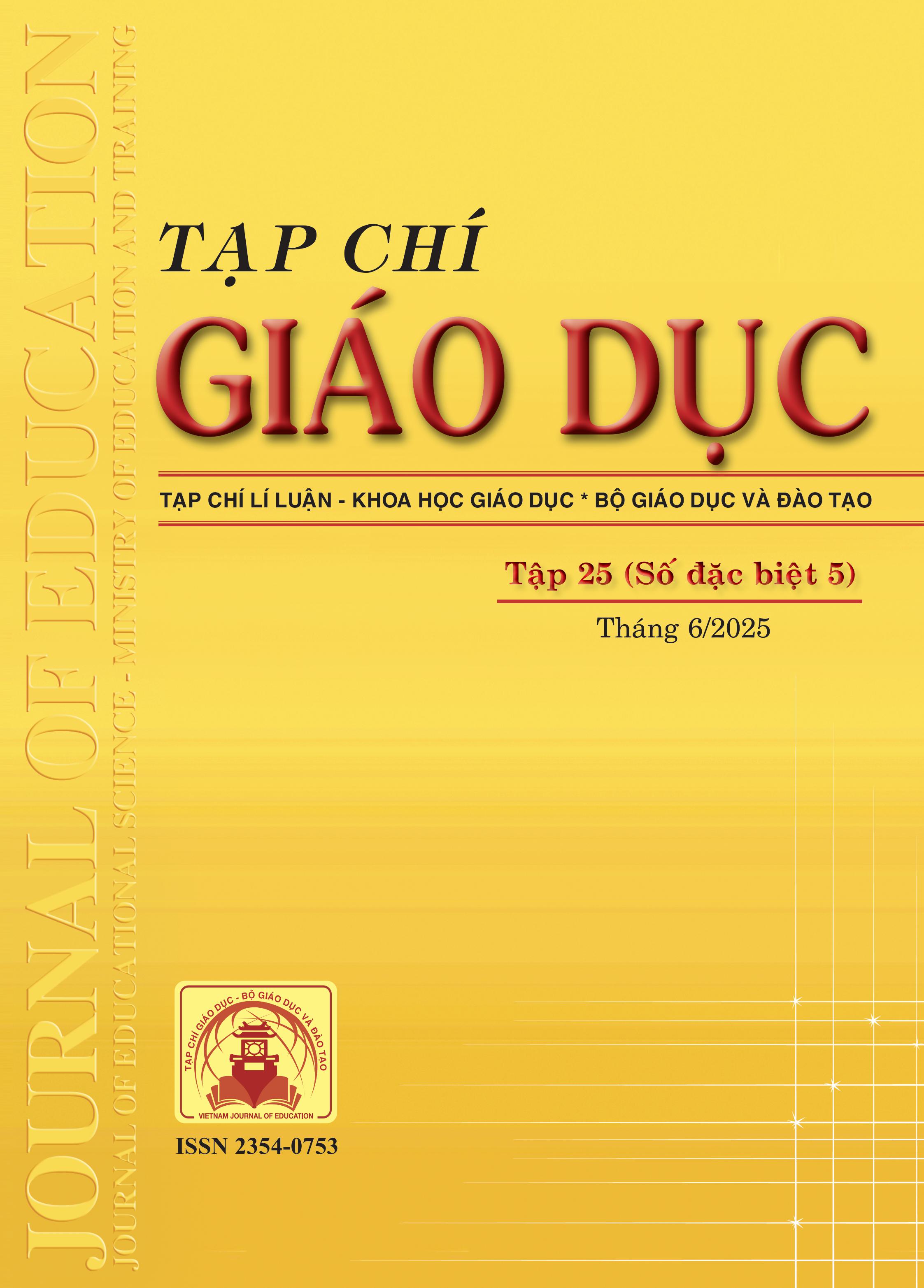Vận dụng quy trình mô hình hóa toán học trong dạy học giải bài toán thực tế học phần “Dao động kĩ thuật” cho sinh viên ngành Cơ khí
Tóm tắt
“Engineering Oscillation” is an important subject in the training program for students majoring in Mechanical Engineering, helping students solve practical problems with high applicability. However, when approaching this subject, students often encounter certain difficulties because the subject is related to knowledge of Physics and Mathematics. This study proposes a mathematical modeling process in teaching and solving practical problems in the subject “Engineering Oscillation” for students majoring in Mechanical Engineering and illustrates this process through a specific problem. The process of implementing the teaching of this subject according to the modeling process aims to help students improve their mathematical thinking skills, develop the ability to apply mathematics in analyzing, simulating and optimizing oscillating systems; enhance the ability to think logically, creatively and autonomously in learning, thereby improving the quality of training.
Tài liệu tham khảo
Barreto, A. C. (2010). Reference Center for Mathematical Modeling in Teaching. Brazilian Precursors.
Blum, W., & Leiß, D. (2006). How do students and teachers deal with mathematical modeling problems? The example “Sugarloaf”. In Haines, C. Galbraith P., Blum, W. and Khan, S., Mathematical modeling (ICTMA 12): Education engineering and economics Chichester: Horwood Publishing, 222-231.
Đồng Thị Hồng Ngọc (2022). Dạy học mô hình hóa trong môn Xác suất và Thống kê cho sinh viên ngành Kinh tế và Quản trị kinh doanh. Luận án tiến sĩ Khoa học Giáo dục, Trường Đại học Thái Nguyên.
Lê Thị Hoài Châu (2014). Mô hình hóa trong dạy học đạo hàm. Tạp chí Khoa học, Trường Đại học Sư phạm Thành phố Hồ Chí Minh, 65, 5-18.
Liu, Y., Baker, F., He, W., & Lai, W. (2018). Development, assessment, and evaluation of laboratory experimentation for a mechanical vibrations and controls course. International Journal of Mechanical Engineering Education, 47(4), 315-337.
Nguyễn Chiến Thắng, Thái Thị Vân An (2023). Phát triển năng lực mô hình hóa toán học cho sinh viên ngành kinh tế trong dạy học nội dung “Hệ phương trình tuyến tính” (Học phần Đại số tuyến tính). Tạp chí Giáo dục, 23(22), 11-16.
Nguyễn Danh Nam (2015). Quy trình mô hình hóa trong dạy học Toán ở trường phổ thông. Tạp chí Khoa học, Đại học Quốc gia Hà Nội, 31(3), 1-10.
Nguyễn Đức Ca, Đinh Văn Thái (2019). Ứng dụng dạy học theo dự án trong dạy học chuyên ngành Kĩ thuật động cơ nhiệt. Tạp chí Khoa học Giáo dục Việt Nam, 18, 43-48.
Nguyễn Ngọc Giang, Nguyễn Thị Thủy, Phạm Thị Thu Nga, Hà Như Mai (2024). Phát triển năng lực giải quyết vấn đề toán học cho học sinh thông qua dạy học giải bài toán thực tiễn ở lớp 9. Tạp chí Giáo dục, 24(8), 23-27.
Nguyễn Văn Thắng (chủ biên, 2016). Giáo trình dao động kĩ thuật trong thiết kế cơ khí. NXB Khoa học và Kĩ thuật.
Pollak, H. O. (1979). The interaction between mathematics and other school subjects. New Trends in Mathematics Teaching, Volume IV, Paris: UNESKO, 232-248.
Stillman, G., Brown, J., & Galbraith, P. (2008). Research into the teaching and learning of applications and modelling in Australasia. Brill, 141-164.
Swetz F., & Hartzler, J. S. (Eds) (1991). Mathematical modelling in the secondary school curriculum, Reston. VA: National Council of Teachers of Mathematics.
Turso, J., Johnson, D., & Sweeney, S. (2003). Development Of A Mechanical Vibrations Course For Engineering Technologists. Conference Session: Curriculum Development in Mechanical ET, ISSN: 2153-5965, 8.418.1 - 8.418.13.
Voskoglou, M. G. (2006). The use of mathematical modelling as a tool for learning mathematics. Quaderni di Ricerca in Didattica, 16, 53-60.
Zhu, N. (2020). Embedding active learning and design-based projects in a noise and vibration course for the undergraduate mechanical engineering program. International Journal of Mechanical Engineering Education, 50(01), 77-88.
Đã Xuất bản
Cách trích dẫn
Số
Chuyên mục
Giấy phép

Tác phẩm này được cấp phép theo Ghi nhận tác giả của Creative Commons Giấy phép quốc tế 4.0 .












